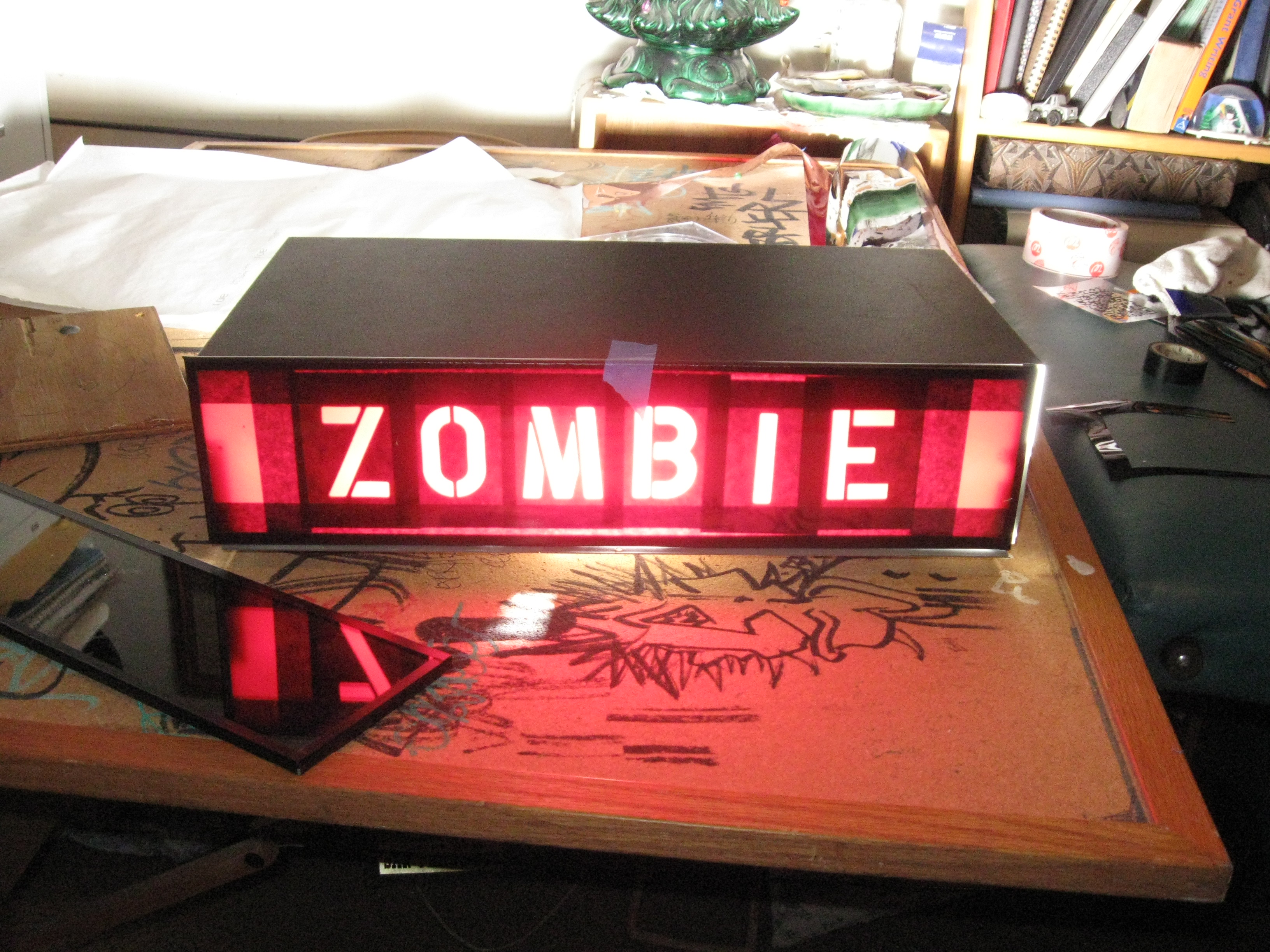Take a picture. It’ll last longer!
This hidden message project uses a photography slave flash to briefly illuminate our message when triggered by a camera’s flash. The message is hidden behind colored gels so that it is not visible from the outside of the case. Since the slave flash lights up the message for such a brief period of time, you can’t really see the hidden message with your bare eyes. Fortunately, your camera not only triggers the slave flash to fire with it’s own flash, but it also takes a picture of the hidden message for you.
I built mine into a prop “Zombie Detector” and had fun taking pictures of people at Maker’s Faires and the California Academy of Sciences.
The slave flash has a xenon tube (strobe) flash and a sensor that will detect the light from the master flash on the camera and cause the slave flash to fire. This is used in photography to provide additional light on a subject that is synchronized to the master camera flash.
While researching this project I learned that Joshua Lionel Cowen of the Lionel toy train fame invented the flash lamp, enabling indoor and night photography. This inspired the fake history of the Zombie Detector and the model train references on the detector.


















